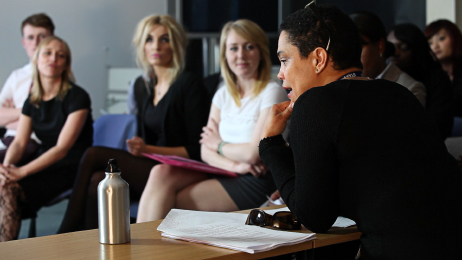

Despite the recession and financial crisis of recent years, many Americans are still in the dark as to how to manage their finances. Some still have trouble understanding interest, loan terms, and why it’s so vital to pay credit cards on time.
So how can we support the future success of young adults and help prevent economic crises? The solution starts with more financial education. Financial sense is necessary to function in society, and yet only 14 states require it as part of their curriculum. The outcome of financial literacy and education can only mean fewer consequences and more gains for young adults.
Students are more likely to stay out of debt and avoid maxing out credit cards
Without education, a credit card seems like free money. After all, the user can take it and swipe it anywhere for a purchase of up to a certain limit without feeling any instant consequence. All that happens is that there’s a receipt with some numbers on it. Pay off the minimum monthly and nothing bad happens, right? Maybe. As long as the credit card owner pays the minimum, the credit score doesn’t go down. Credit cards in general, however, have huge interest rates that will cause the balance to build and build until even the minimum monthly payment is unaffordable.
According to US News, 20% of college seniors carry a credit card balance of $7,000 or more. Where did it start? Most likely in high school and then spiraled from there once colleges required textbooks and online access codes. Education on how this problem escalates out of control and the affects of it can prevent students from neglecting this responsibility. One non-profit organization has already begun spearheading this issue in schools and communities around the country. Junior Achievement USA sends over 350,000 volunteers into schools to deliver a curriculum designed to educate students about financial literacy, workforce readiness, and entrepreneurship. Their programs reach elementary through high school students and even offer scholarships for college students. There are many other financial literacy programs in development around the U.S. hosted by non profits, private institutions, and government agencies.
Students are more likely to understand their college loans and consequences
Despite entrance and exit counseling on loans, many students don’t grasp the process and how it works. For example, FAFSA can help by providing loans with low, fixed interest rates where the interest can be paid off as it accumulates rather than have it be capitalized and added on to the principal balance later. Students might not understand that skipping student loan payments and entering bankruptcy does not release them from eventually paying off the loans anyway. Education needs to happen before loans are taken out so that students know how to responsibly settle loans. To spark financial literacy education, the U.S. Department of Education ran its first National Financial Literacy Challenge to get more schools across America participating in financial literacy education.
Students are more likely to build savings
USA Today recommends that a rainy day fund include rent and living expenses for a minimum of six months, but preferably for two years. With many Americans living paycheck to paycheck and barely scraping by, it’s clear that most people don’t have a rainy day fund, let alone one of that size. It’s important to teach students how to save money. Traditionally, financial experts call it “paying yourself first.” Take a standard percentage from each paycheck earned, stick it in a separate account, and pretend it doesn’t exist. The concept is simple- and it’s something students need to understand and apply for themselves.
Categorized as: Tips for Teachers and Classroom Resources
Tagged as: Career and Technical Education, Math and Science
